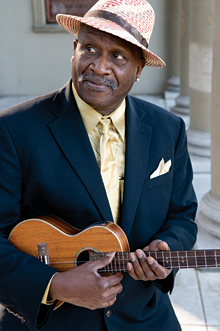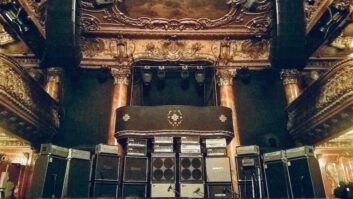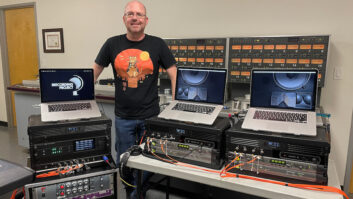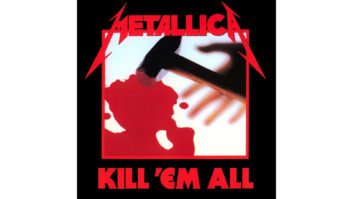
Photo: Jay Blakesberg
During the 1960s, the Rolling Stones, Paul Butterfield Blues Band, Canned Heat, John Mayall & The Bluesbreakers and Janis Joplin were widely credited with sparking mainstream interest in the blues. Working a little more quietly — but no less authentically — was one Henry St. Clair Fredericks, now better known as Taj Mahal. Born in New York City but raised in Springfield, Mass., Taj Mahal first achieved notoriety in Los Angeles with the Rising Sons, a group he co-founded with Ry Cooder, but he would make a name for himself as a solo artist with a series of superb and influential Columbia albums in the late ’60s, including Natch’l Blues and Giant Step.
Those discs showed Mahal’s affinity for both country and urban-blues styles, but later recordings found the gruff-voiced but easygoing singer/guitarist exploring West Indian, Latin, New Orleans, Hawaiian, African, reggae and other styles.
“When I started out doing what everyone thought was crazy in the ’70s has now turned into what is called ‘world music,’” Mahal says from his San Francisco Bay Area home. “Every time I go out, I’m just trying to clear more space to work in and always making sure the imprints [influences/innovators] don’t get lost.” Maestro, his latest in a 40-year recording career, offers a broad overview of styles, featuring diverse guests recorded at a half-dozen studios. “Those ‘get-together’ records are really not my favorite thing,” he comments, “but I’ve been really careful to pick people who were doing something that made some sense on the record.”
For a year, beginning in May 2007, Mahal worked with Ben Harper at Capitol Studios in Hollywood (Danny Kalb, engineer); Ziggy Marley at Westlake in Los Angeles (Marc Moreau, engineer); Los Lobos and Mahal’s daughter, Deva Mahal, at Sonikwire in Irvine, Calif. (Mark Johnson, engineer); and his own Phantom Blues Band at Ultratone in Studio City, Calif. Tracks featuring Jack Johnson, Angelique Kidjo and kora player Toumani Diabate were done at those artists’ respective studios as files. Additionally, Mahal went to The Shed in New Orleans, where engineer Gordie Johnson recorded Mahal with an all-star band featuring Ivan Neville on B3 organ, George Porter on bass, Leo Nocentelli on guitar, Henry Butler on piano and Raymond Weber on drums. “I want things to be as live as possible,” Mahal stresses, “with a band playing and somebody singing. I don’t like a lot of overdubs.”
Keeping everything organized and doing prep work was Johnny Lee Schell’s role. He owns Ultratone, is a former member of Mahal’s band and played guitar on tracks with the Phantom Blues Band. Schell converted his detached garage into a studio, with a 20×20 control room for his own projects, but due to the room’s popularity he hardly ever gets to use it.
Schell’s equipment includes Pro Tools HD3 Accel, a Control|24 surface, Neve 8816 16×2 summing mixer, Alesis Masterlink, 10-inch speakers, API and Neve preamps, and a healthy selection of vintage and new microphones, including a number of DPA condensers. Among the instruments are a Hammond B3, Wurlitzer, a grand piano and an array of guitars. For these sessions, drums sat in a 10×18-foot iso booth, while everyone else was in the main studio together. “Taj loves working in my little place,” Schell says, “and I do all the drum setup and miking. That makes it easy for [engineer] Joe McGrath to just come in, set the levels and mostly record without EQ or a lot of processing. I know Joe was using Altiverb for reverb, and he likes Bomb Factory’s Pultec EQ a lot, and the 1176. When we’re tracking, I play through Amp Farm and the same for Taj’s guitar. Taj decides what he wants to record and we’ll try a few different things. Then we listen back till we’re happy, go to the next song and get between two to four done in a day.”
McGrath notes, “Just about any mic sounds good on Taj’s voice, and he’s a performer. Once you hit Record and the song is over, that’s pretty much it, except for maybe a few horn and percussion touchups. He’d listen and make a couple of comments, mostly about the low end. He wanted to make sure that was pumping.”
McGrath, who was about to begin working with Green Day when we spoke, mixed Maestro at Ultratone in May of this year. “It was a very painless process,” he notes. “Taj was around for 90 percent of it. ‘I Can Make You Happy’ with Los Lobos was really fun to mix, with growling guitar and a funky groove. While ‘Zanzibar,’ recorded in Africa featuring kora and ngoni, was the most challenging, with Taj giving me special instructions. Mixing was really interesting and fun because the CD is very eclectic and every day was something different.”
Mahal concludes: “I love the CD and one of the high points was my daughter writing and singing ‘Never Let You Go’ with Los Lobos. But I’m thrilled with everyone on the record and none of it is window dressing.”





